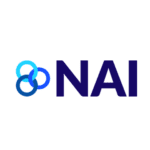When we think of marketing in the digital age, we often envision sprawling social media campaigns, stunning websites, and state-of-the-art apps. Yet, one of the most effective strategies for boosting sales and enhancing customer loyalty often gets overlooked: geotargeting with coupons, discounts, and offers.
Geotargeting, the practice of delivering content to users based on their geographic location, allows businesses to send tailored messages to specific audiences. This can be particularly useful when providing location-specific offers or discounts. Here’s a guide to making the most out of this strategy.
Understand Your Audience
Before diving into geotargeted offers, you need to know who you’re targeting. Collect data on:
- Demographics: Age, gender, education, etc.
- Buying behaviors: When and how often do they shop?
- Preferences: What are they looking for in your products or services?
This data will help you craft an offer that speaks directly to that audience’s needs and desires.
Localize Your Offers
Customize your offers based on the local culture, events, and trends. For instance, a retailer could offer special discounts during a local festival or sporting event. By aligning your promotion with local happenings, you enhance its relevance and appeal.
Optimize for Mobile
Most geotargeting happens on mobile devices. Ensure your offers are optimized for mobile viewing, and consider using push notifications for users who’ve downloaded your app. Real-time offers, when a user is near your store or location, can be particularly effective.
Use Dynamic Pricing
In areas with higher demand or where your product is scarce, consider using dynamic pricing. For instance, a hotel might offer lower rates on weekdays when demand is lower and raise rates on weekends.
Test and Adjust
Like any marketing strategy, geotargeting requires testing and iteration. A/B test different offers, analyze the results, and adjust accordingly. This helps ensure that you’re always putting your best foot forward and maximizing ROI.
Mind the Law
Different regions have various laws regarding digital marketing, data collection, and user privacy. Always ensure that your geotargeting campaigns adhere to local regulations. When in doubt, consult with a legal expert familiar with digital marketing laws in your target area.
Provide Real Value
Last, but certainly not least, make sure your offers provide real value. It might be tempting to offer minimal discounts or inflate prices before providing a “discount,” but this can backfire. Customers appreciate genuine value, and building trust is essential for long-term loyalty.
From social media ads to email campaigns, it’s easy for your message to get lost in the noise. To stand out and genuinely connect with your audience, it’s crucial that each message provides real value. But how can marketers be sure? Let’s explore some strategies to ensure that every marketing message is valuable.
1. Know Your Audience
Before crafting any marketing message, you must have a deep understanding of your target audience. What are their needs, desires, and pain points? How does your product or service address these? By answering these questions, you can tailor your message to resonate more profoundly with your intended recipients.
Example: A company selling organic baby products should understand that their primary audience might be new mothers who are conscious about the environment and baby’s health. A tailored message for this group might emphasize safety, eco-friendliness, and natural ingredients.
2. Solve a Problem
Every good product or service should solve a specific problem for its users. Ensure your marketing messages clearly communicate this solution. Rather than focusing solely on features, highlight the benefits. Show your audience how their lives will be improved.
Example: If you’re marketing a noise-cancelling headphone, don’t just highlight its advanced technology. Emphasize how it can help users find focus in noisy environments, making it perfect for busy commutes or crowded offices.
3. Educate and Inform
Value doesn’t always equate to selling. Sometimes, the most valuable messages are those that educate or inform. Share insights, tips, or industry news that your audience might find useful. Over time, this positions your brand as an industry thought leader.
Example: A skincare brand might publish blog posts or infographics explaining the causes of acne or the benefits of hydration. This not only provides value but also builds trust in the brand’s expertise.
4. Be Transparent
Nothing erodes trust faster than deceit. Be transparent in your marketing efforts. Avoid using misleading headlines, and always be honest about what you’re offering. If there are limitations to your product or service, be upfront about them.
Example: If you’re selling a fitness program that claims to help users lose weight, be clear about the commitment needed and any other requirements. Don’t promise “easy” results if it requires intense daily workouts.
5. Personalize When Possible
Thanks to modern technology, personalization in marketing has become more accessible. Use data insights to tailor messages for different segments of your audience. Personalized messages can make recipients feel understood and valued.
Example: An online bookstore can send personalized reading recommendations based on a user’s previous purchases or browsing history, making the user feel uniquely catered to.
6. Use Clear Call-to-Actions (CTAs)
A valuable marketing message should guide recipients toward a clear action. Whether it’s signing up for a webinar, reading a blog post, or making a purchase, your CTA should be straightforward and compelling.
Example: An email campaign for a webinar might end with a vibrant button saying “Reserve My Seat!” rather than a generic “Click Here.”
7. Encourage Feedback
Invite your audience to share feedback on your marketing messages. This not only shows that you value their opinion, but it also provides invaluable insights to refine future campaigns.
Example: After purchasing from an online store, customers could receive a follow-up email asking for their feedback on the shopping experience, with a link to a quick survey.
8. Avoid Overpromotion
While it’s natural to want to promote your offerings, bombarding your audience with constant sales pitches can be off-putting. Aim for a balanced mix of promotional content and value-driven content.
Example: A beauty brand could share makeup tutorials, skin care routines, and customer testimonials. Instead of just pushing products, they’re offering value through content, interspersed with occasional product promotions.
9. Stay Updated with Industry Trends
To provide value, you need to stay ahead of the curve. Regularly update yourself with industry trends, emerging technologies, and shifts in consumer behavior. This ensures your messages remain relevant and timely.
Example: A tech company selling smart home devices should be aware of the latest advancements in home automation and AI. They can then craft messages that highlight how their products are up-to-date with the latest trends.
10. Measure and Adjust
Lastly, always measure the impact of your marketing messages. Track metrics like engagement rates, click-through rates, and conversion rates. If something isn’t working, adjust your approach. Remember, marketing is as much an art as it is a science, and constant refinement is key.
Example: If a holiday marketing campaign for a boutique had a lower-than-expected click-through rate, the team could analyze which elements underperformed and tweak them for the next campaign, maybe by adjusting the email subject line or the graphics used.
Providing value in marketing messages is not just about increasing sales, but about building long-term relationships with your audience. By ensuring each message is tailored, relevant, and genuinely beneficial, marketers can foster trust, loyalty, and, ultimately, brand advocacy. Remember, in a world filled with noise, value is the melody that will make you stand out.
Remember the Reason to Geotarget
Geotargeting offers a unique opportunity for businesses to engage customers on a more personal and localized level. By harnessing the power of location-based offers, discounts, and coupons, you can boost sales, enhance customer loyalty, and set your business apart from competitors. Remember to always offer genuine value and stay in tune with local trends and needs for maximum impact.




